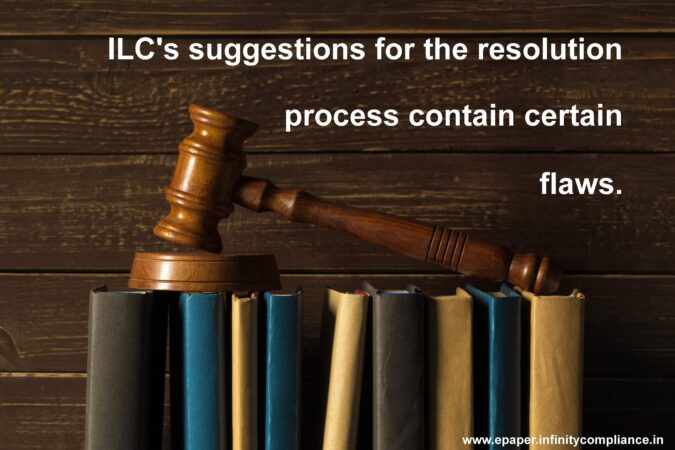According to a report by the Insolvency Law Committee (ILC), pursuing legal action against erroneous or fraudulent transactions even after the corporate resolution procedure is through could speed up the resolution of insolvent enterprises.
According to specialists in the Insolvency and Bankruptcy Code (IBC), the report, however, does not specify who should be in charge of the legal action regarding such transactions.
The Committee notes transactions connected to the insolvency procedure that might be inappropriate or fraudulent (avoidable transactions and improper trading). It debated whether legal action against such transactions should continue after an insolvent firm’s resolution procedure is complete. According to the report, two things would occur if they weren’t. Before the resolution plan could be approved, National Company Law Tribunals would need to resolve all pending cases involving such transactions. Second, such instances would be deemed needless if they were not handled prior to the end of the resolution procedure.
According to the research, permitting such circumstances after adoption of a resolution plan would be more effective because both cases would result in unpleasant consequences.
Who will take it up if an amendment is adopted to continue such legal actions after the settlement process is over? An initial report of improper transactions is made by a resolution professional (RP), who is then let go once the resolution procedure is complete. The insolvent company is then acquired by the resolution plan’s winning bidder.
“The applicant may argue that since the Resolution Professional (RP) filed the complaint, they are not permitted to continue the avoidable transaction/improper trading litigation. The RP is released once the resolution procedure is finished. Accordingly, the legislation ought to specify who should bring the lawsuit, according to Abhishek Swaroop, a partner at Saraf and Partners.
Swaroop advised pursuing legal action in this situation because the resolution applicant or winning bidder has benefited from the settlement. “After a resolution plan is successfully carried out, the NCLT may publish a notice indicating that such matters are still pending. The victorious petitioner for a resolution may then assume control,” he stated.
The time frame for reporting questionable or fraudulent transactions has also been changed by the Committee. Previously, after the resolution process had begun, such transactions would be reviewed. The Committee now advises that these transactions be netted as soon as a company files for bankruptcy. Defaulting businesses are now adopting preventative measures before submitting paperwork for the Corporate Insolvency Resolution Process (CIRP). This adjustment would fix that and improve the effectiveness of the resolution procedure, according to Swaroop.
Another significant topic covered in the study is whether secured creditors who have chosen to realise their interests elsewhere instead of participating in the liquidation process should also be forced to pay workmen’s compensation. Sometimes these creditors may decide to use other methods of quicker recovery rather than adding their assets to the liquidation pool. Even in these situations, the Committee has advised that these creditors pay the labourers.
These workers’ unpaid wages date back to the past 24 months, a period during which the company was struggling and they made the decision to stick around. This is a socially astute adjustment. It acknowledges the workers’ distress, according to Swaroop.
